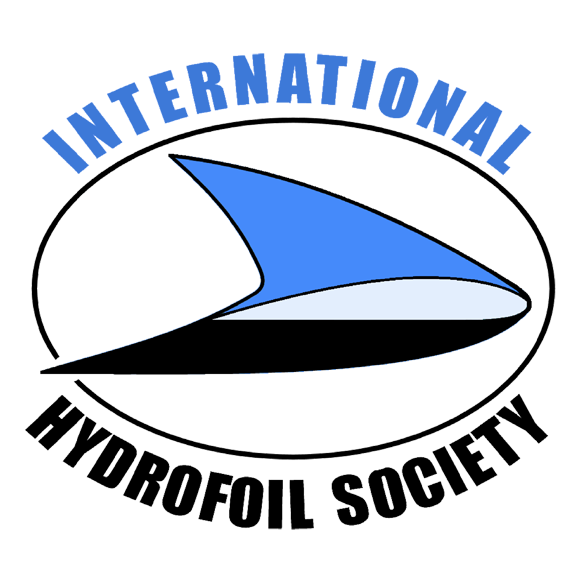International Hydrofoil Society Correspondence Archives…
Correspondence
[9 Dec 01] There is so much happening these days with high speed ships and craft, and there is some recognition now that some transportation modes are fast approaching gridlock; examples: the interstate highways in major metropolitan areas, the advice now to seek other modes of transport for trips of 500 miles or less due to the airline issues. On the government side, we have:
- Naval Transformation push from Congress and OSD and now N76 in OPNAV starting an initiative on Littoral Combat Ship (LCS) under the re-structuring of DD 21
- Recent business relationships put into place by Bollinger and Bender to build Incat and Austal designs in the US
- Army plans for near-term procurement of Theatre Logistics Vessel (40 knot catamarans) (Press Release: Click Here)
- Joint lease of Incat and III MEF lease of Austal (Photos: Marines Loading and Inside WestPac Express; Press Release: Click Here )
It is incumbent on all of us to promote advanced naval vehicle technology and get the word out to the general public. Based on the operational capabilities achieved in the 1970s/80s, at least in terms of military payload fraction and speed-sea state performance, there is a good story to tell on the successes of the PHM program. — Mark Bebar (bebar@foils.org)
[16 Apr 98] After researching hydrofoils I conclude that they are far superior with respect to handling, performance, and comfort, than a normal displacing hull. So why then are they not used much anymore? In all my research I can only find one reason that sticks out: the foils can only be so big due to stress factors and drag. A huge ocean liner can carry much more than a hydrofoil, yet it is slower. Do you know of any other reasons, perhaps design drawbacks or facilities, the hydrofoil is becoming a prehistoric way of transport? — Tristan Lee Andrews (tlandrew@learn.senecac.on.ca)
[19 Apr 98] First, regarding size, the foil lifting capacity is an area function, increasing with the square of the speed. So in the practical speed range of 40 to 50 knots with the size of the hydrofoil craft increasing by a cubic function, the foil dimensions become relatively quite large. A Navy study concluded that a 2,000 ton hydrofoil was about a limiting size. Range is another consideration. Hydrofoils can be shown to compete commercially with aircraft up to about 300 miles on a time basis for downtown to downtown routes. This takes into consideration time to and from airports and the ability of the hydrofoil to go downtown to downtown. Hydrofoils have demonstrated their ability to provide superior rough water passenger comfort. So in adverse sea conditions, sea state three and above, their ride quality and speed are better than other high speed sea craft. The real problem is that hydrofoils have a high first cost on the basis of cost per seat mile. It has been determined that the acquisition cost is the driving factor in most acquisition decisions. To increase the use of commercial hydrofoils, studies that I have been involved with indicate that there is a market for small, 100 to 300 seat capacities, at speeds in the 40 to 50 knot speed range, with submerged foils and automatic control systems. But the first cost has to be made more attractive than available hydrofoils on the market today. I would like to see some concentrated design effort put into this area by a responsible designer and builder. — Robert J. Johnston
[18 Apr 98] I am also under the impression that interest in “the hydrofoil” is fading. Very few yards are pursing this concept. Rodriquez itself seems not to be interested in developing new ideas. Is there anything that can be done to foster a new breed of Hydrofoils? A few ideas: An agreement between IHS and Fast Ferry Magazine; Make available all studies carried out in the US on the field to all the interested parties via IHS web pages; Disseminate the hydrofoil ideas to all shipyards building fast ferries. — Diego G. Mazzeo (diegomazzeo@tiscalinet.it).
[21 Mar 98] I am trying to determine the possibilities and performance capabilities of using hydrofoil boats for personal yachting. I once rode on a trial craft that was to be utilized commercially in the Great Lakes (USA) but it never happened. This particular craft was about 60 feet long and was fast and smooth. — Art Leo (dab1@flash.net)
Response…[21 Mar 98] I am presuming that you are speaking of motor yachts rather than sailing yachts. There are operating many hydrofoils of proven design operating in the size range you mention, though they are designed as ferries or tour boats. There are also several on the drawing boards waiting for someone to bankroll the detail design and development. I believe that one royal personage had a Boeing Jetfoil outfitted as a yacht in Saudi Arabia or a neighboring country. On a smaller scale, Harry T. Larsen, a Boeing employee, successfully added foils and an automatic control system to his Bayliner. Please spend some time exploring the links section of the IHS webs page. There is a South African and an Italian site that could interest you, also Harry Larsen’s site. If you could provide any specifics on the nature of your interest… whether you are a the designer or the customer, areas in which the yacht is intended to operate, etc. that might help generate more useful info. — Barney C. Black (webmaster@foils.org)
PO BOX 51 – CABIN JOHN MD 20818 – USA

